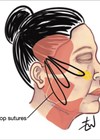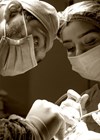Features
Is rhinoplasty still a plastic surgery procedure?
As a result of the rationing of healthcare in the NHS and the treatment of nasal trauma by other specialties, there is anecdotal evidence that current plastic surgery trainees have less exposure to rhinoplasty procedures. This article explores the issue...
OPINION - From ethics to commerce: challenges faced by cosmetic practice for 2025 and beyond
Cosmetic medicine and surgery have seen remarkable and ongoing increases in popularity, reflecting advancements in medical technology and evolving societal norms based on, for example, social media, cultural expectations, and globalisation of beauty standards. Unlike with other medical specialties, these...
Threads in rhinoplasty: to thread or not to thread?
Polydioxanone (PDO) and poly-L-lactic / poly-caprolactone (PLL / PCL) threads are presently accessible for facial rejuvenation, and they enjoy significant popularity within aesthetic clinics worldwide, especially in Southeast Asia [1–3]. Often proposed as risk-free with minimal downtime, these threads now...
Runny nose after nonsurgical rhinoplasty – review of cases
Hyaluronic acid filler injections have become a popular procedure worldwide; according to the American Society of Plastic Surgeons (ASPS) from 2019 to 2022 filler procedures have increased by 70% [1]. Non-surgical rhinoplasty is becoming a popular procedure because of the...
Mandibular asymmetry: Importance of personalised treatment
This article has been verified for CPD. Click the button below to answer a few short questions and download a form to be included in your CPD folder. Human facial symmetry is a key determinant for assessing facial attractiveness, and...
Is point of care ultrasonography just an inscrutable snowstorm or is it here to stay?
To non-radiologists ultrasound may always look like a snowstorm . . . so unless you are the one holding the scanner and moving it over the patient with some idea of their history, it is difficult to know what you...
Building sustainable global partnerships – the BFIRST perspective on future-proofing global plastic surgery
The British Foundation for International Surgery and Training (BFIRST) marks their 10-year anniversary this year as an organisation. As the international outreach arm of the British Association of Plastic, Reconstructive & Aesthetic Surgeons (BAPRAS), BFIRST focuses on supporting surgeons in...
The incidence of non-surgical rejuvenation in facial aesthetic surgery
Non-surgical facial rejuvenation has increased exponentially in the last 20–30 years in a society which demands immediate results with minimal downtime. The overall UK market is estimated at £3.6 billion annually. The use of facial injectables increased by 7000% between...
Recent developments in facelift surgery
Early facelifting procedures were documented in the 1900s, where skin undermining with excess skin excision along the hairline was performed. The 1970s witnessed a major change with an upsurge in public interest in facelift surgery, which led to innovative changes...
Medical racism and the surgical ‘correction’ of the nose in Brazil
Anthropologist Professor Carmen Alvaro Jarrín has conducted extensive research into plastic surgery practice in Brazil. Here, she explains why social and cultural ideas about race may shape rhinoplasty objectives for patients and surgeons in the country. Health professionals worldwide are...
A world-first in cosmetic surgery. All eyes are upon Australia.
The past three years have been tumultuous for cosmetic surgery in Australia. Media reporting on the poor practise of a small number of medical practitioners led to multiple administrative processes including the Independent review of the regulation of medical practitioners...
Lips and the perioral area: anatomical considerations for safer and natural results
This article has been verified for CPD. Click the button below to answer a few short questions and download a form to be included in your CPD folder. Minimally invasive cosmetic procedures, including lip augmentation using hyaluronic acid dermal fillers,...
















